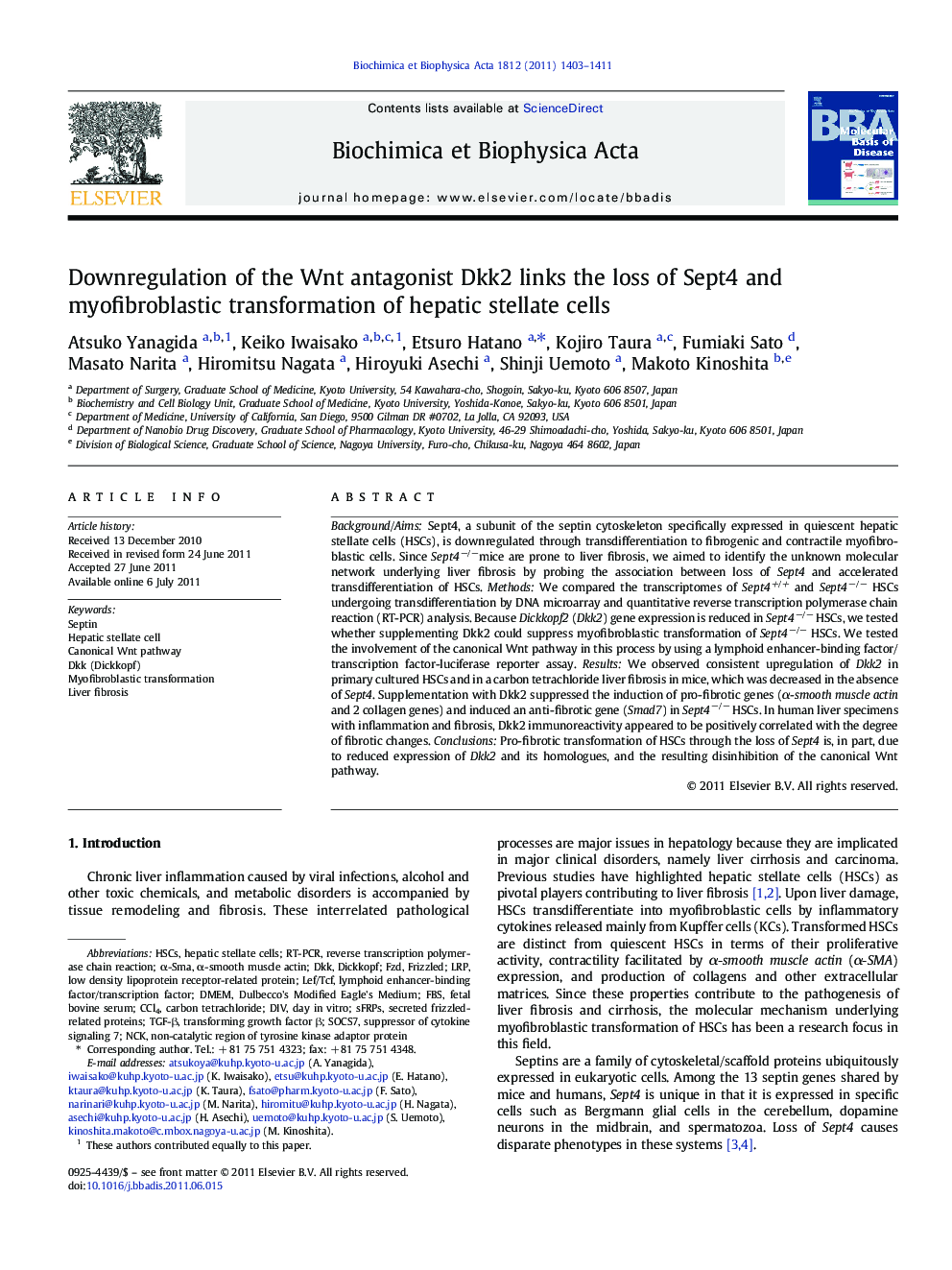| Article ID | Journal | Published Year | Pages | File Type |
|---|---|---|---|---|
| 1905111 | Biochimica et Biophysica Acta (BBA) - Molecular Basis of Disease | 2011 | 9 Pages |
Background/AimsSept4, a subunit of the septin cytoskeleton specifically expressed in quiescent hepatic stellate cells (HSCs), is downregulated through transdifferentiation to fibrogenic and contractile myofibroblastic cells. Since Sept4−/−mice are prone to liver fibrosis, we aimed to identify the unknown molecular network underlying liver fibrosis by probing the association between loss of Sept4 and accelerated transdifferentiation of HSCs.MethodsWe compared the transcriptomes of Sept4+/+ and Sept4−/− HSCs undergoing transdifferentiation by DNA microarray and quantitative reverse transcription polymerase chain reaction (RT-PCR) analysis. Because Dickkopf2 (Dkk2) gene expression is reduced in Sept4−/− HSCs, we tested whether supplementing Dkk2 could suppress myofibroblastic transformation of Sept4−/− HSCs. We tested the involvement of the canonical Wnt pathway in this process by using a lymphoid enhancer-binding factor/transcription factor-luciferase reporter assay.ResultsWe observed consistent upregulation of Dkk2 in primary cultured HSCs and in a carbon tetrachloride liver fibrosis in mice, which was decreased in the absence of Sept4. Supplementation with Dkk2 suppressed the induction of pro-fibrotic genes (α-smooth muscle actin and 2 collagen genes) and induced an anti-fibrotic gene (Smad7) in Sept4−/− HSCs. In human liver specimens with inflammation and fibrosis, Dkk2 immunoreactivity appeared to be positively correlated with the degree of fibrotic changes.ConclusionsPro-fibrotic transformation of HSCs through the loss of Sept4 is, in part, due to reduced expression of Dkk2 and its homologues, and the resulting disinhibition of the canonical Wnt pathway.
► Mice without a hepatic stellate cell(HSC)-specific gene Sept4 develop liver fibrosis. ► Unbiased screening of Sept4-null HSCs revealed downregulation of the Dickkopf genes. ► Dickkopfs are the Wnt inhibitors implicated in liver fibrosis in mice and humans. ► Supplementing HSCs with Dickkopf2 suppressed the upregulation of pro-fibrotic genes. ► Disinhibited Wnt signals account for the pro-fibrotic phenotype of Sept4-null mice.
